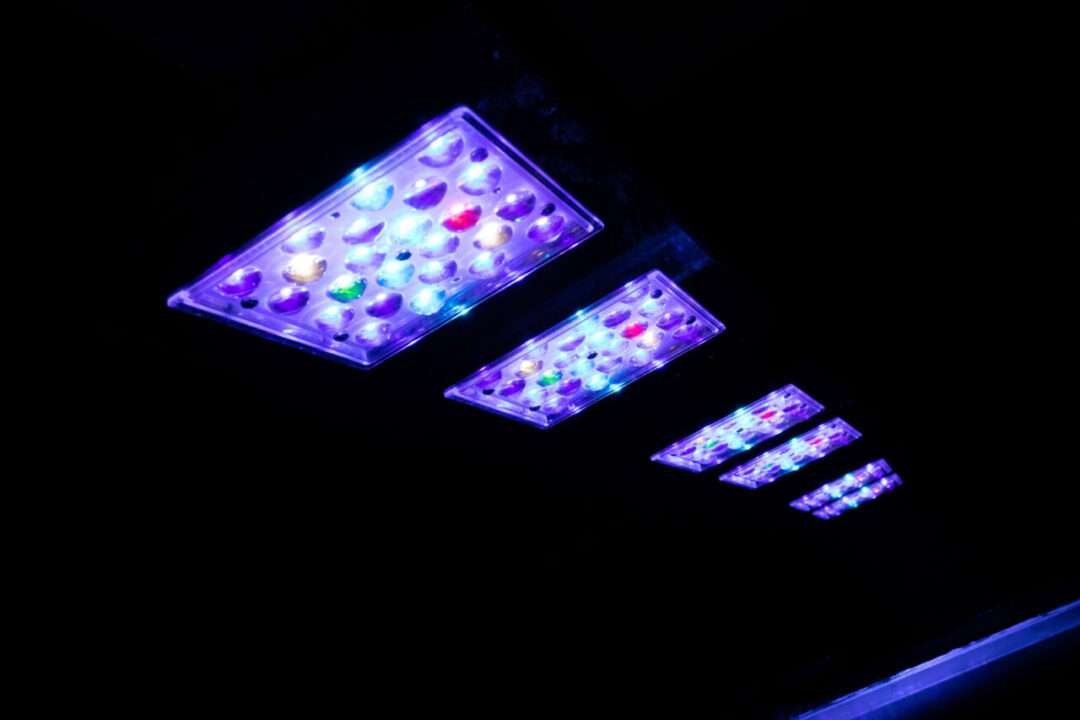Table of Contents
WATT vs PAR – Introduction
WATT vs PAR is a frequent topic of discussion among marine aquarium hobbyists. However, many enthusiasts rely on the WATT parameter when choosing the right lighting for their tanks.But are they making the right decision by focusing solely on WATT when selecting their lights? This article will attempt to answer this question.
WATT vs PAR – what is the difference?
Simply put, WATT measures power consumption, or the amount of energy used by a device. This value also directly impacts the operating costs required to maintain the aquarium under optimal conditions.
On the other hand, PAR (Photosynthetically Active Radiation) refers to the spectrum of light that supports photosynthesis, particularly for photosynthesizing organisms like the symbiotic zooxanthellae in corals. WATT vs PAR is a crucial comparison. While WATT reflects energy usage, PAR determines the quality of light available for photosynthetic processes in marine life.
What light parameters are best for corals?
As we know, both the quality and intensity of light affect coral growth and coloration. The quality of light that reaches corals is often measured using PAR. PAR (Photosynthetically Active Radiation) refers to the spectrum of light usable by photosynthesizing organisms, such as the zooxanthellae living symbiotically in corals, to conduct photosynthesis.
In marine aquariums, proper levels of PAR are essential for healthy coral growth. Insufficient PAR can slow coral growth or even lead to coral death. Moreover, too much light intensity can cause light stress, tissue damage, or even death.
As you can see, both the WATT vs PAR parameters are incredibly important in marine aquariums. Understanding the differences between these two metrics will help aquarists make more informed decisions when selecting lighting for their tanks.
How do corals feed on light?
Corals live symbiotically with zooxanthellae—algae that utilize light for photosynthesis. As a result of photosynthesis, corals receive sugars produced by the algae, providing them with essential nutrients. The higher the quality of light (measured in PAR), the more efficiently this process occurs.
Furthermore, corals need a specific amount of light, which can be measured using PAR/PUR units. If the PAR/PUR is too low, corals will host more symbiotic algae in their tissues. This may lead to a brownish color in the coral. This change in color can signal that the light quality is inadequate for optimal coral health.
For more information about light in marine aquariums and its significance, you can refer to the article. Additionally, the article titled “Light in the marine aquarium – you need to know this!“
WATT vs PAR – choosing the right WATT for your aquarium
On various aquarium forums and manufacturer websites, you can find a range of recommendations. Moreover, these recommendations help with selecting the appropriate lighting power for marine aquariums. Typically, the rule of thumb is that the minimum power for 100 liters of water should be 100 WATT. Also, some recommendations suggest using 0.6 WATT per liter of water.
However, when choosing lighting based on WATT per liter, it is crucial to consider the correlation. Specifically, the correlation between WATT and PAR/PUR for a particular light fixture is important. This will not only help reduce energy costs but also ensure that you select the most efficient light available on the market.
Conclusion
In marine aquariums, WATT vs PAR is an essential consideration that affects coral health and growth. While WATT defines energy consumption, PAR directly influences the quality and amount of light needed for photosynthesis in corals. Although WATT is important in terms of operational costs and energy efficiency. However, PAR ultimately determines whether corals receive the proper light for healthy growth. When choosing a light, it’s important to pay attention to both parameters. Therefore, this ensures optimal lighting conditions in a marine aquarium.
Additionally, we encourage you to check out our YouTube video on lighting in marine aquariums: https://youtu.be/7fTMlf-qziY.

About the author

Marek Protasewicz
Reefkeeping has been my passion for over 10 years now. I love learning. The hobby has taught me many valuable lessons, patience being the best example. Combining work and passion is my path. I run Crazy Coral, a marine aquarium shop, for a number of years. Building this business from the scratch I learnt from my own mistakes at a heavy cost.
Later I managed a project aimed at development of methods for quick growth of Corals in non-natural conditions. The project was carried out by Get Sales, Poland. Presently, I am responsible for distribution strategy at Reef Factory, of which I am a co-founder. The company produces smart devices for marine aquaristics. The last projects I have been involved in are Social Reef and ReefPedia.




